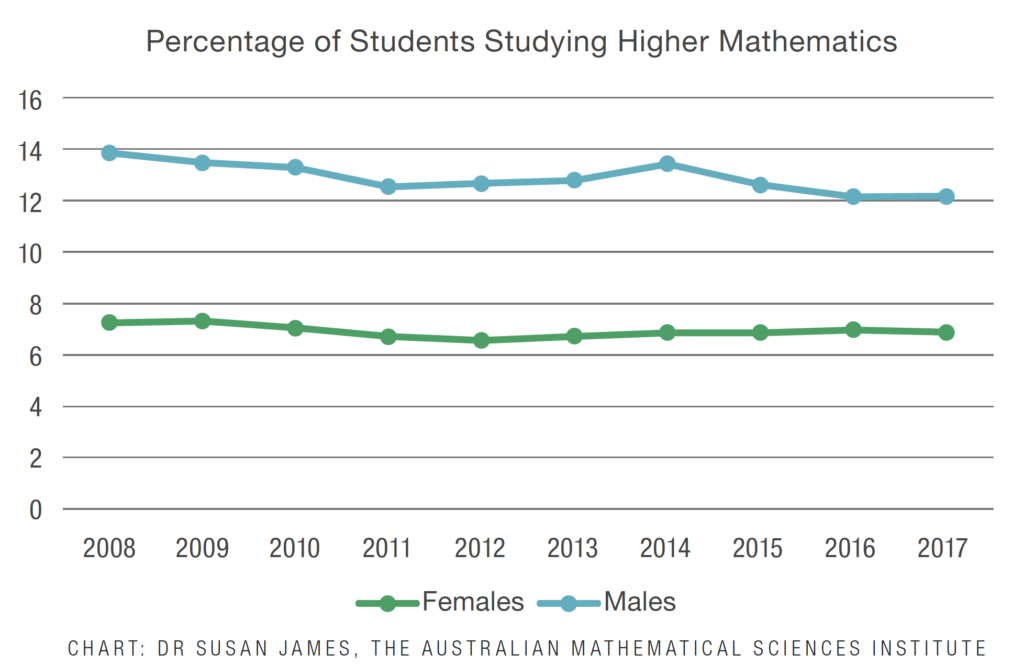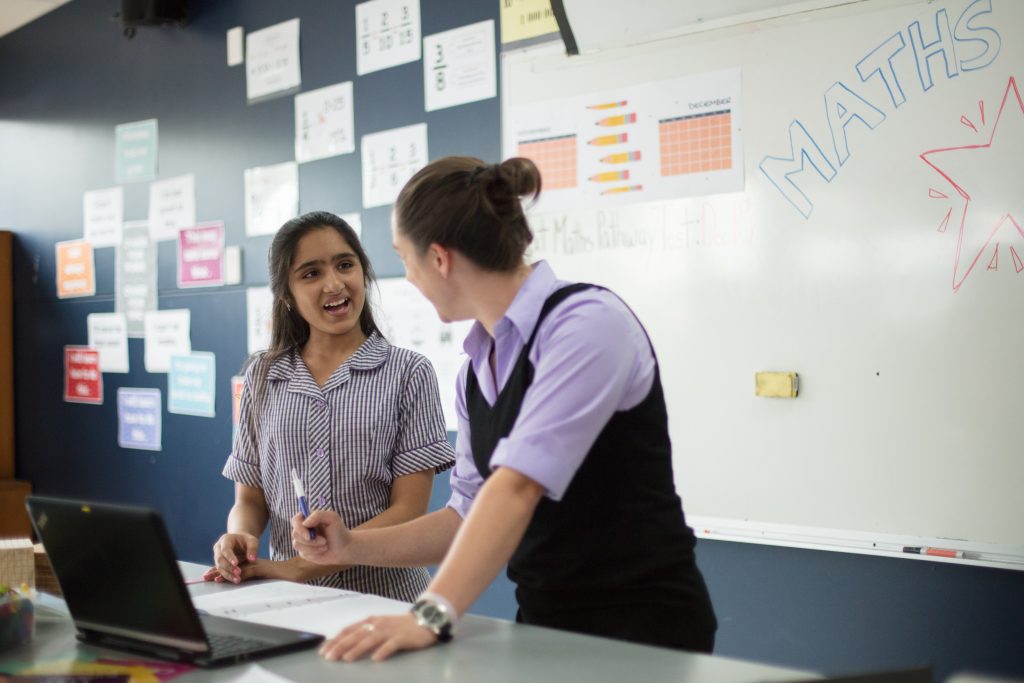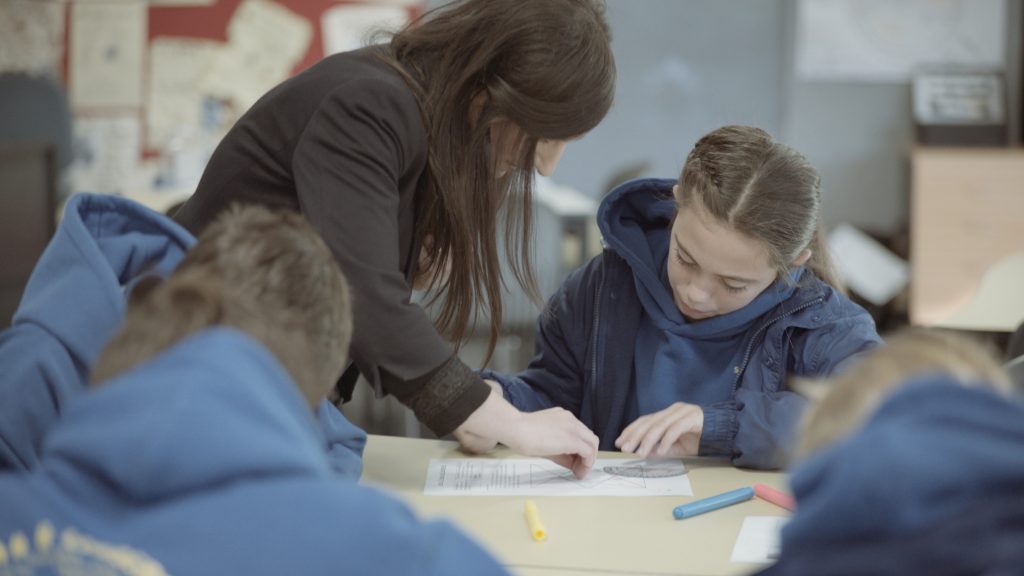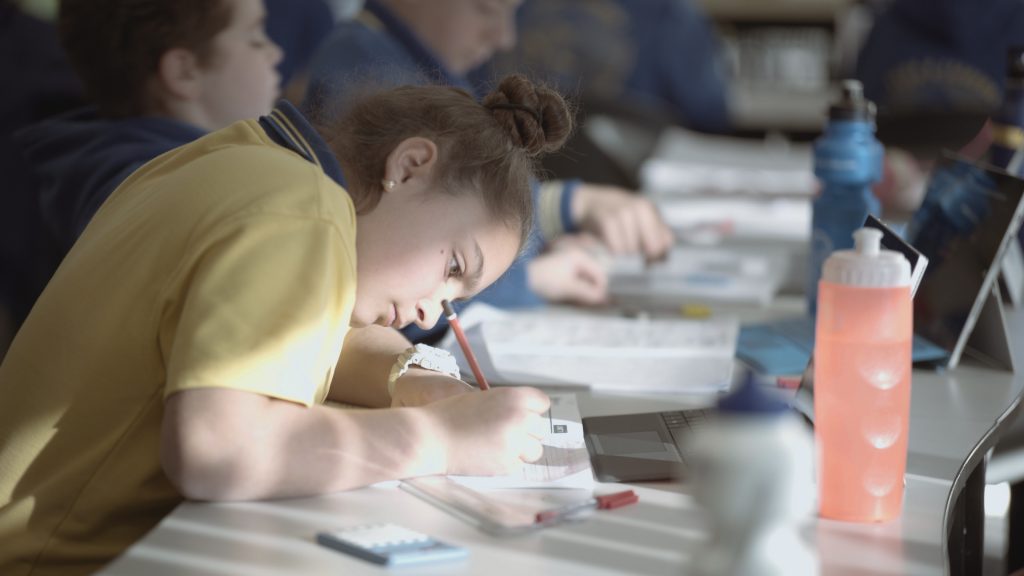The world is celebrating International Women’s Day this week and in Australia we’re uniting under the theme ‘More Powerful Together’. It’s a theme that highlights the important role we all have to play in breaking down the stereotypes and gendered roles in our communities.
When it comes to mathematics, and wider STEM education, the gender gap is something that’s often discussed. A wealth of conflicting research exists on the topic, some suggesting boys are stronger in maths and others showing that in many countries, girls are stronger than boys . What we do know, however, is that in Australia less girls than boys participate in advanced maths subjects in senior school. And this has a flow on effect — only 16% of university and VET graduates in STEM are female.
In its latest report ‘Year 12 Mathematics Participation Report Card’, the Australian Mathematical Sciences Institute (AMSI) reveals new figures that show only 6.9% of Year 12 girls studied advanced maths in 2017, while 12.2% of boys took up the subject. In comparison, 7.3% of Year 12 girls and 13.8% of boys studied advanced maths in 2008. These findings show the continuation of deeply concerning 20-year decline in girls studying advanced maths in senior school.

So why are there less females studying advanced maths? According to Head of Strategic Research Initiatives at ANU and Maths Pathway Advisory Board member, Roslyn Prinsley, “Advanced Maths is often perceived as too hard, boring, irrelevant, and many girls have low confidence in their ability to understand and succeed in this subject. It is often viewed a ‘boy’s subject’”.
Roslyn says this attitude towards maths commonly develops in childhood and continues throughout schooling.
“Divergent attitudes formed by girls and boys in childhood—such as confidence in their abilities to apply mathematics to problem solving—have far reaching implications for the opportunities available to them in adulthood.”
Such implications are important to consider, given many of the jobs of the future will exist in the STEM field.
“The low participation of girls in advanced mathematics threatens female participation in many STEM professions” Roslyn explains.
“Girls and women represent untapped talent. Enabling them to realise their potential is about both economic growth and social justice. Recruiting and retaining a diverse set of minds and approaches is vital to harnessing the nation’s intellectual capital for innovation and competitiveness.”

There are a number of ways we can get girls engaged in advanced maths. One is to structure learning to grow confidence.
“The ability to learn at their own pace, so that they truly understand the mathematical concepts and how to apply them will increase confidence and ability,” says Roslyn.
“Hard work and persistence are required to succeed in mathematics, and these should be rewarded. Confidence should be built and girls should be taught that it’s okay if you don’t understand it straight away.”
This focus on ‘growth mindset’ is a key component of the Maths Pathway model which is designed with the understanding that mathematics is developed cumulatively and incrementally. Maths Pathway targets learning to every student’s point of need, so they can experience growth and success by progressing on the continuum, regardless of their starting point.

Another way to engage girls is to include more activities that encourage them to ‘play with maths’ in the classroom — like Rich Learning.
“Maths should be taught in a way that seems relevant and interesting to students. There is considerable evidence for the value of ‘productive struggle’. Rather than focussing on skills alone, Maths should be used to solve real world problems that are of interest to young people. In fact, this is often the best way to teach skills,” says Roslyn.
“Teaching maths in the traditional way often means that students spend a lot of time learning and practising individual skills but not applying all of these to real world problems. This is akin to a music student learning all of the scales, but not how to play a musical piece, or in an orchestra.”

Personalised learning and Rich tasks are two of eight components within the Maths Pathway Learning and Teaching Model. When implemented in the classroom, the model supports teachers to increase their impact, and students — particularly girls — are experiencing increased growth rates.
Females using the Maths Pathway model in 2018 were learning 1.28 years of maths in a year, exceeding the average male students at 1.22 years of maths. This is also double the growth rate of a traditional classroom which sits at 0.6 years of maths learning per school year.
Maths Pathway student, Fatima, says she loves learning maths and has grown since using the Maths Pathway model —“I really like maths. It’s my favourite subject.”
“I started at Year 6 level and I was really struggling but now I can work Year 9 stuff really easily. I could not have gone this far if I didn’t do Maths Pathway because they would obviously be teaching me Year 7 stuff and I was working at a Year 6 level and I would have been freaking out — I would probably have been below,” Fatima explains.

“Now, I’m around (level) 9.5, I can’t do Year 10 stuff yet. I try, but it’s too hard for me. But I keep working on it and I think I’ll be able to do it in a little while.”
Girls like Fatima who are using Maths Pathway are well and truly on track to not only study advanced maths in senior high school, but have the confidence and engagement in the subject to be successful. So that if their enjoyment in maths continues and they look to pursue a career in a STEM field, there will be nothing in their way.
Not only does this rate place girls on the path to successfully study advanced maths, it engages them and gives them the confidence to to be successful in it. So if their enjoyment in the subject continues and they look to pursue a career in a STEM field, there will be nothing in their way.